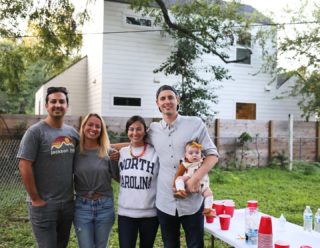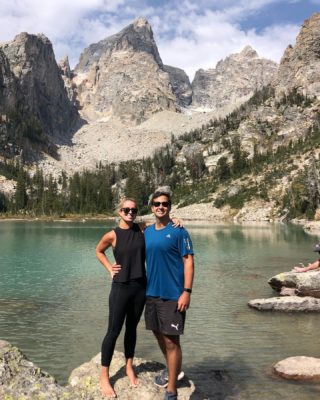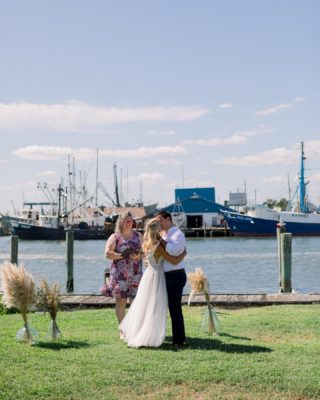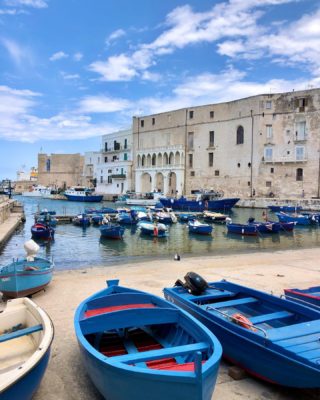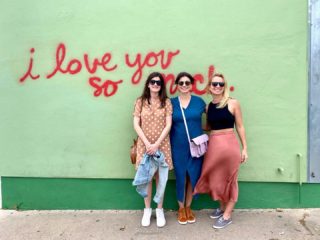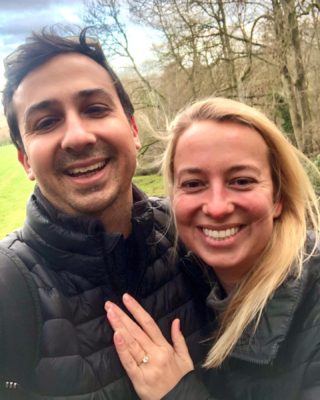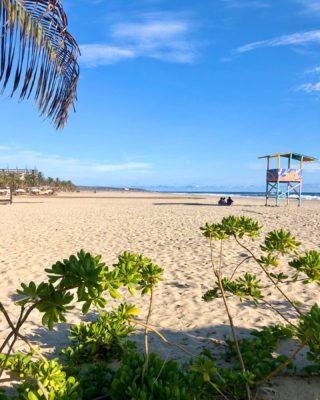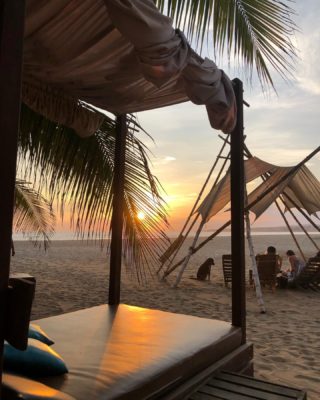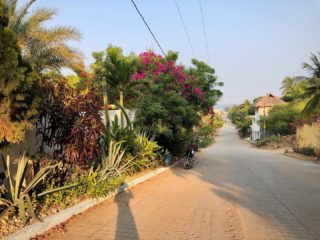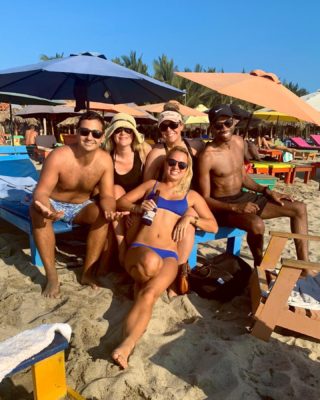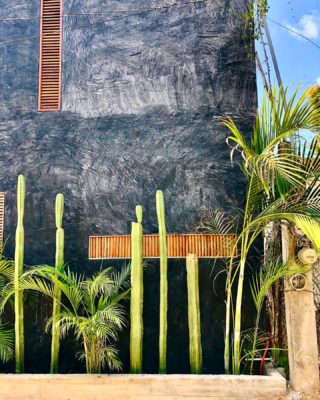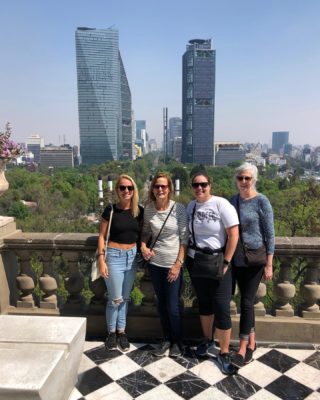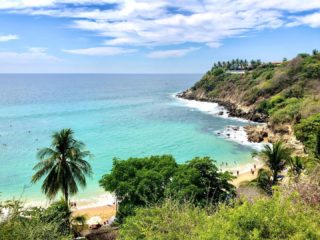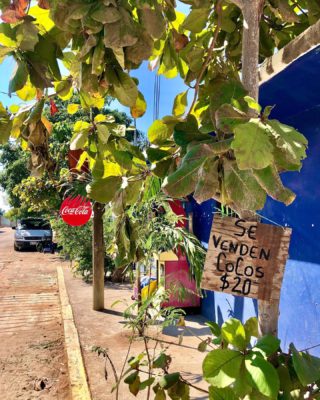So one of my main objectives on this little career break around the world of mine is, obviously, to eat as much local cuisine as possible. I’d been doing a pretty good job of this myself, wandering Cartagena and Playa Blanca, eating all the fruits, arepas, and fish with coconut rice and patacones that I could get my hands on, but to ensure that I got a real sense of everything the city had to offer, I enlisted the help of some professionals.
On my last full day in Cartagena, I went on a street food tour to try some different snacks around the city and get a glimpse of Getsemaní, a rougher, graffiti-filled neighborhood located outside of the pristine, historic city center. It’s a place you can actually see real life taking place rather than the vendor-filled, tourist-centric El Centro.

It was just two New York social workers and me on the tour that afternoon, along with our guide, Juan. Juan explained that his company created this tour to showcase the street food endemic to Cartagena. Not the best of the best or personal favorites, mind you, but foods that come from Cartagena and vendors who have been here for while and earned their spot on the street.
It’s important to note that there’s no permitting process for opening up a street food cart or stand here in Cartagena. And you don’t get dibs on your spot through any particular bureaucratic paperwork or municipal process. You just have to be awesome at what you do. That’s how you get to keep your spot and how people will know where to find you. After you’ve earned it.
Survival of the fittest, if you will. That’s how I like my food.


Our first stop was at a food cart that had been in that particular location for over 20 years. We received a snack somewhat similar to patacones. We each tried a portion of deep fried plantains that had been smashed and topped with queso costeño, a fresh, salty, soft but crumbly cheese. (We may have a new favorite cheese on our hands, guys.)

Next we moved around the corner to try some mango from a man who had occupied his spot on the street for 13 years.


Of course, I don’t mean that we tried just any old mango, though yes, those are WAY better here. Instead we tried a common local treat: green, unripe mango, sliced and sprinkled with lime juice, salt, and black pepper. Crisp, refreshing, tart, and it felt healthy to my body after all the things I’d been eating and drinking prior to the tour.


Notice how my camera chose to focus on the girl behind the mangos. Oh well, it’s the only foto I took before eating them!
Next up: Oh hell yeah, arepas! Two kinds!
Arepas are the super popular discs made of corn (dough, meal, or flour) which can be filled or topped with anything you might imagine. They are ubiquitous on the streets here and they’re also super filling. The first we tried was a fluffy white corn arepa with cheese inside, smothered with butter, that had a texture almost like potatoes. The second was made with sweet yellow corn (choclo) and tasted a lot like cornbread, though a bit denser. So delicious!


But wait! You thought we were done with arepas! No! Not until you’ve had one fried and stuffed with beef and egg! Especially from this lady’s cart that comes with all the salsas and sauces your heart could desire! And we all know how I feel about sauces…


There’s guacamole, hot and mild tomato salsas, a curdled milk-yogurt sauce, mixed cilantro and onion salsa, and salsa rosada (which they have everywhere here – I’m pretty sure it’s just a mix of ketchup and mayo, so yeah, I love it).

Then we ventured to the meat – the fatty, salty, chewy meats! Pork belly and pig skin chicharrones! Accompanied by yucca and their corresponding sauces, of course!
These were delightful, though not as crispy as the chicharrones that my dad buys from the gas station in the bag. There was more meat to them. To serve it, the lady picks out your piece of meat and forcefully chops it into bite sized pieces.

Sorry, this dish isn’t the most photogenic.
Then we headed off for something a little lighter. I couldn’t for the life of me remember what this fruit was called, as I thought our guide said passionfruit. I knew it didn’t look like those passionfruits I’d seen in Thailand, but after some Internet searching and holding up photos to the Peruvian guy next to me at the hostel, I think it must be the granadilla.


You open the hard exterior with your fingernails and then suck out the sweet inside part. It’s slippery and weird and full of seeds (which we were told not to chew on, but I did anyway, because I like a little crunchy texture and because I can’t listen to instructions).
The other woman in the group couldn’t finish hers, but I ended up with mine all over my face while trying to eat it and walk down the street at the same time. Classy as always. What? Did you guys think I’d change when I left the country?

And then we moved on to desserts!

This little combo is called el matrimonio, because guava and salty costeño cheese make quite the pairing! You have to take a bite of each of them together and they really do complement each other. But man, that guava paste is uber sweet!

Sadly, we missed the buñuelo guys – they’d run out for the day and were supposed to be a stop on this dessert portion of the tour. But don’t worry, I’ll sample them before I leave this country! In fact, I may go search for them tonight…
We continued our tour with the more cultural portion of the trip – onwards into Getsemaní. You can tell almost immediately when you cross from the historic city center into this newly gentrified neighborhood.


The most famous club in the city – Cafe Havana – Hilary Clinton danced here when she visited Cartagena.

We learned about how the neighborhoods used to be islands with a river running between them. The royalty lived in the center while the mulatos and others lower on the social ladder lived in Getsemaní – though now the area is filled with hostels and hotels – and it will soon be home to a Four Seasons and a Hilton, for better or for worse
The difference between the two neighborhoods, aside from the rougher nature of the streets, was readily apparent. Here you could actually see children playing and people hanging out and really living, in sharp contrast to the salespeople and the almost fully commercial buildings of the city center.



Another difference: Instead of pastel or bright colors and flowers everywhere, there was plenty of graffiti. But like, really good graffiti.
This tour took us to streets we surely wouldn’t have ventured down ourselves. The walls were crumbling, there was construction going on, and there were even a few homeless people hanging around. But it was great to have a guide for this area, because it’s where lots of graffiti artists come to leave their mark, many of them from Bogotá.


Now, normally I’m not a fan of blogs that rave about street art and post that shit like it’s going out of style, but some of this stuff was really incredible. The one above is my favorite.

Impressive right?



Above is a portrait of the homeless man who sticks around this area.


I take back what I said. These guys might be my favorite. Same artist (from Brazil), different streets.

Want to hear something really sad? The artist behind the mosaics above let children from the city create these. The house is supposed to represent the child’s home, the refrigerator represents having enough to eat, the table signifies enough family time together, and the couch stands for having enough beds to sleep in.
The one I’ve shown appears to be a pretty solid, adequately equipped home. But others just have people in them with nothing else. One house even has people turned upside town to represent that they’ve died. Pretty moving stuff.


Remember when I said you could see kids playing? I wasn’t kidding. This is a hangout spot for locals as well as an impromptu soccer – excuse me, fútbol – field for kids.

Our final food stop on the tour was a very unique one. There’s an older couple in the neighborhood who makes fruit popsicles for the people of the community and sells them from the window.
No sign. No nothing. You just have to know they’re in there and call out to them. They’ll tell you the two flavors of the day and sell them to you right there.

We had the choice of coconut or banana. I opted for the banana. It tasted way healthier than any other popsicle I’ve ever had. You know, because it was made with actual fruit. You just bite through the thin plastic bag to get at it.

We then saw more graffiti, which ranged from a portrait of the city, to a commentary on slavery, to a character from Garbriel García Márquez’s Amor y Otros Demonios.
We wrapped up the tour and then had a beer together in a small, hip bar in the neighborhood. A great time was had by all, and I was super full by the end of it. I always love a good food tour.
I will admit though, that my walk back alone to the center from Getsemaní was filled with catcalls and comments from men – like more than usual for Colombia so far, and not as sweet and gentle as those I’d received in the historic center of Cartagena.

While tons of the blogs and reviews I read beforehand about Cartagena said that staying in Getsemaní (and its burgeoning backpacker district) is totally safe and more authentic, I didn’t feel as comfortable walking around alone there. It might be fine for guys or couples, but I’m really glad I stayed in a hostel that was located in El Centro.
Getsemaní is cool, hip, and definitely shows the history of Cartagena and its progression forward, and you should totally pay it a visit to get a broader, more informed sense of the town. But if you’re a solo female, maybe save it for a day trip.
The Cartagena street food tour features about 10 tastings of street food snacks throughout the city. The price is $60,000 COP (a way better deal right now than paying in dollars) or, if you choose pay in dollars, about $30 USD. It starts every day (except Sunday) at 2:30 PM in the San Diego neighborhood of El Centro and ends in Getsemaní. For the price, it’s totally worth it – I would’ve never found these street food carts, or seen Getsemani and the street art in this way without the tour.










